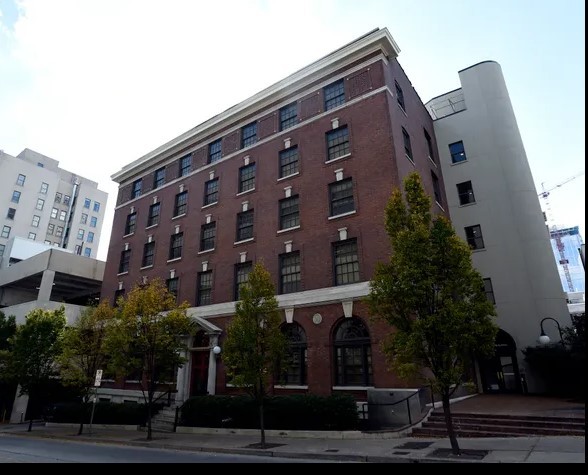Demystifying the Federal Historic Tax Credit Program
By Dr. Lane Tillner
The year 1976 not only marked the Bicentennial, but it also saw the creation of the Federal Historic Tax Credit (HTC) program, which has been going strong ever since. A collaborative relationship between the National Park Service, the Internal Revenue Service, SHPOs, and the public, the HTC program promotes the rehabilitation of historic buildings, listed on or eligible for the National Register of Historic Places, for original or new commercial uses as income-generators. Those projects that are designated as “Certified Rehabilitations” by the National Park Service are eligible for a 20% tax credit over a five-year period, once the building is placed in service.
Rehabilitation projects under the scope of the HTC program must be in conformance with the Secretary of the Interior’s Standards for Rehabilitation. Despite, the commonly held misconception that the ten Standards are rigid, prescriptive work methods; they exist as flexible, best practice guidance. The Standards do not exist to make rehabilitation projects difficult or prohibitively expensive, rather they ensure that as buildings change over time their unique character is maintained.
The Historic Tax Credit program does not restrict property use or tell an owner how to use their property (beyond the income-producing requirement). It does not require, ask, or want owners to freeze a building in time without any flexible changes whatsoever. History does not remain fixed, nor do the buildings that came out of it. The program requires that owners recognize, respect, and retain the historic features and character of the building as they work to create a new chapter in the building’s history.
The program application consists of three parts used to apply for certification: Part 1: Application Evaluation of Significance, Part 2: Description of Rehabilitation, and Part 3: Request for Certification of Completed Work. Part 1 certifies that a building is listed on the National Register of Historic Places either individually or as a contributing resource to a listed historic district and is deemed a “certified historic structure.” Or Part 1 may be used to request a preliminary determination of whether a building might be eligible for listing individually or as a contributing resource to in a potential district. Part 2 simply details the proposed rehabilitation work. It is during the Part 2 that rehabilitation work is reviewed for conformance with The Standards. While each Part is separately reviewed and approved (or denied or conditionally approved), it is not until a Part 3 has been approved by the National Park Service that the work has been determined to meet the Standards and deemed a “Certified Rehabilitation.” Each application part requires documentation that is reviewed to ensure conformance with The Standards.
Recently, the program moved to an all-electronic format. Gone are the days of printing and sending photographs and architectural drawings. All applications and documentation are now easily transmitted electronically to the SHPO who then transfers it to the National Park Service following their review of the materials. Transitioning the program to an electronic format will likely decrease review times, create more program access for new users, and build upon existing relationships to continue to highlight historic character of buildings while providing them with a new life. You can learn more about the electronic submittal process and documentation requirements at the NPS’s “Electronic Submission of Certification Applications” or the Tennessee Historical Commission’s “Federal Historic Tax Credit Program.”
In its nearly fifty years of existence, the Federal Historic Tax Credit program has certified over 48,000 historic rehabilitation projects and generated over $122 billion in estimated rehabilitation investment.
In an effort to mirror the benefits of the Federal Historic Tax Credit, in 2021, the Tennessee General Assembly authorized the creation of the Historic Development Grant Program (HDGP), jointly administered by the Tennessee Historical Commission and the Department of the Economic and Community Development. The annual, competitive grant program provides grants to aid property owners in the rehabilitation process. The HDGP directly follows the same practices and procedures of the Federal Historic Tax Credit. All buildings must be listed on, or eligible for, the National Register of Historic Places. All awarded projects must be in conformance with The Standards and follow the same application and documentation process. Best of all, the Federal Historic Tax Credit and the Historic Development Grant Program can be stacked, providing even more incentives for property owners and economic benefit to the region and State at large.
If you think the HTC program might be a good fit for your rehabilitation project or want to know more about the program, please reach out to THC.Rehab@tn.gov.